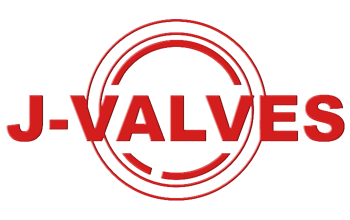
The Excellent Sealing Performance And High Pressure-bearing Design of J-VALVES Trunnion Ball Valves


In the field of industrial fluid control, BALL VALVES, as a key type of valve, are crucial for ensuring the safe and efficient operation of the production process in terms of their performance and reliability. Thanks to its outstanding sealing performance and high pressure-bearing design, the J-VALVES TRUNNION BALL VALVE has become the top choice in numerous industrial applications. This article will explore in detail the advantages of the J-VALVES trunnion ball valve in terms of sealing performance and pressure-bearing capacity, and through comparative analysis, demonstrate its leading position in the industry.
I. The Sealing Performance of J-VALVES Trunnion Ball Valves
(A) Sealing Principle
The J-VALVES TRUNNION BALL VALVE adopts an advanced sealing design concept, and its sealing performance mainly relies on the close contact between the ball and the seat. The sealing surfaces between the ball and the seat are precisely machined and ground to ensure a high degree of conformity between them. Under the action of the medium pressure, the seat seal ring can be tightly pressed against the ball, thus achieving a zero-leakage sealing effect.
(B) Sealing Materials
The J-VALVES trunnion ball valve is extremely meticulous in the selection of sealing materials. It usually adopts high-performance PTFE (polytetrafluoroethylene) elastic sealing rings embedded in stainless steel seats. This combination of materials not only has excellent corrosion resistance and wear resistance but also can maintain stable sealing performance under harsh working conditions such as high temperature and high pressure.
(C) Self-cleaning Function
The sealing surface design of the J-VALVES trunnion ball valve also has a self-cleaning function. When the ball rotates, the fluid flows evenly along the sealing surface of the ball, which can not only wash away impurities on the sealing surface but also reduce the damage to the seat caused by local scouring, thereby prolonging the service life of the sealing surface.
II. The High Pressure-bearing Design of J-VALVES Trunnion Ball Valves
(A) Structural Design
The high pressure-bearing capacity of the J-VALVES trunnion ball valve mainly benefits from its unique structural design. The ball is supported by upper and lower bearings, and the force generated by the fluid pressure in front of the valve is completely transmitted to the bearings, without causing excessive pressure on the seat by the ball. This design not only reduces the deformation of the seat but also reduces the operating torque, enabling the valve to be easily opened and closed under high-pressure working conditions.
(B) Optimization of Valve Body Wall Thickness
To ensure safety in a high-pressure environment, the wall thickness of the J-VALVES trunnion ball valve body has been accurately calculated and optimized. Through finite element analysis and thermal-structural coupling analysis, the optimal wall thickness of the valve body has been determined to ensure that the valve will not deform or leak under high pressure.
(C) Fireproof and Antistatic Design
The J-VALVES trunnion ball valve also has fireproof and antistatic functions. In extreme situations such as fires, the seat seal ring can quickly form a metal-to-metal seal with the ball under the action of the spring to prevent medium leakage and fuel the fire. In addition, the valve is equipped with anti-static devices to ensure the electrical continuity among the ball, the valve stem, and the valve body and prevent the generation of electrostatic sparks.
III. Comparative Analysis: J-VALVES Trunnion Ball Valves vs. Traditional Ball Valves
To more intuitively demonstrate the advantages of the J-VALVES trunnion ball valve, the following table compares the differences between the J-VALVES trunnion ball valve and the traditional floating ball valve in terms of sealing performance and pressure-bearing capacity:
Features | J-VALVES Trunnion Ball Valves | Traditional Floating Ball Valves |
Sealing Performance | Zero leakage, self-cleaning of sealing surface | Sealing surface is prone to wear, and sealing performance decreases under high pressure |
Pressure-bearing Capacity | High, suitable for high-pressure and large-diameter working conditions | Relatively low, and the seat is prone to deformation |
Operating Torque | Low, easy to open and close | High, difficult to open and close |
Service Life | Long, with strong wear resistance of the sealing surface | Short, and the sealing surface is easily damaged |
Fireproof Performance | Complies with API 607 standard | General, without fireproof design |
Antistatic Function | Equipped with anti-static devices | Without antistatic design |
It can be seen from the above table that the J-VALVES trunnion ball valve is significantly superior to the traditional floating ball valve in terms of sealing performance and pressure-bearing capacity. Its unique design and material selection enable it to adapt to more complex working conditions while reducing the operation difficulty and maintenance cost.
IV. Application Fields
The J-VALVES trunnion ball valve, relying on its outstanding sealing performance and high pressure-bearing design, is widely used in high-pressure and large-diameter pipeline systems in industries such as petroleum, natural gas, chemical engineering, and electric power. Whether it is in long-distance transmission pipelines, high-pressure gas transmission pipelines, or the inlets and outlets of chemical reactors, the J-VALVES TRUNNION BALL VALVE can ensure the reliability and safety of fluid control.
V. Summary
The J-VALVES trunnion ball valve stands out in the field of industrial fluid control with its outstanding sealing performance and high pressure-bearing design. Its advanced sealing technology and optimized structural design enable it to perform excellently under high-pressure and large-diameter working conditions while reducing the operating torque and maintenance cost. Compared with traditional floating ball valves, the J-VALVES TRUNNION BALL VALVE has significant advantages in terms of sealing performance, pressure-bearing capacity, and service life. Whether in the petroleum and natural gas industry or in fields such as chemical engineering and electric power, the J-VALVES trunnion ball valve is an ideal choice for ensuring the safe and efficient operation of production.













